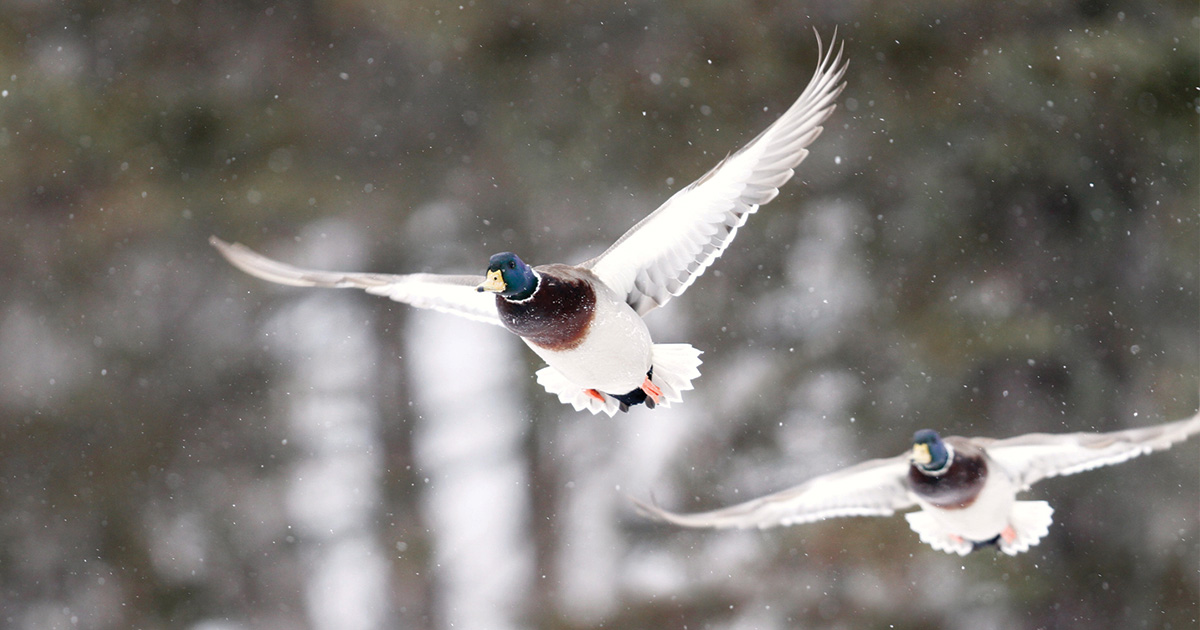Migration Alert: Late-Season Cold Hits Central Flyway
Jan. 12, 2024 – Central Flyway – Central Flyway Update
Jan. 12, 2024 – Central Flyway – Central Flyway Update

Bitterly cold temperatures and snow have finally arrived in northern portions of the Central Flyway, and hunters in southern states are hoping that the change in conditions is enough to put waterfowl on the move. Here's a look at how hunting opportunities may heat up as a blast of late-season cold hits the Central Flyway.
There is cold, and then there is cold, and the brand of winter weather descending throughout the Central Flyway in the coming days, from North Dakota to northern Texas, is of the latter variety. The arrival of bitterly cold temperatures, including day-time highs of -10 or colder in the northern stretches of the flyway, comes on the heels of winter storms that dumped measurable snow in portions of South Dakota, Nebraska and Kansas, as well as Iowa and Missouri.
This is good news for hunters in places like Oklahoma, where waterfowl have yet to arrive in numbers typical for this point in the season.
The mid-winter waterfowl survey conducted earlier this month across Oklahoma revealed pockets of mallards, gadwalls, and other puddle ducks concentrated in areas of good habitat, explains Paxton Smith, head waterfowl biologist for the Oklahoma Department of Wildlife Conservation. The birds were found particularly in western and northern regions, where December rain events helped create ideal conditions. Wildlife officials conducting the survey also noted an extremely large number of green-winged teal in the state.
The short-term weather forecast for much of Oklahoma includes multiple days of freezing temperatures. Smith believes this will likely be enough to shuffle waterfowl around the state.
"The mallards that are here have become very hard to hunt leading up to this change in the weather, rafting up in the middle of large reservoirs during the day and flying into the shallows to feed at night," Smith says. "I expect that this change in the weather may break this pattern, however."
Multiple days of freezing temperatures are likely to put ice on many smaller bodies of water across the state, forcing birds to look for open water and food in new areas.
Oklahoma hunter Bill McCarthy plans to use an ice-eater to keep water open with the hope that the change in conditions will provide a boost to what has been a tough waterfowl season.
"It's been a slog at times, and I think that has everything to do with weather conditions further up the flyway. Hopefully, we'll see some new ducks and geese with this cold front," says McCarthy, who has spent most of the season in the northeast part of the state. "There's a good chance that our water will all lock up, but then we'll hope for a thaw and a bit of a reverse migration, and we'll catch the birds when they move back in."
Freezing temperatures and sub-zero windchills are also forecasted for north Texas, and Sam Harryman, senior wildlife biologist with the Texas Parks and Wildlife Department, says the stage is set for any new birds that push into the region behind the cold.
"Our playas remain full from summer rains, and overall, we have more water on the landscape this winter than we have had the last few years," says Harryman. He says that these areas of water have attracted numerous species of ducks, Canada geese, sandhill cranes, and even some snow geese.
"Our weather has been fairly mild, so this will be the first big cold snap of the season," Harryman says. "The conditions are good for waterfowl as long as we can keep some open water around."
Stay up to date with the latest migration information.